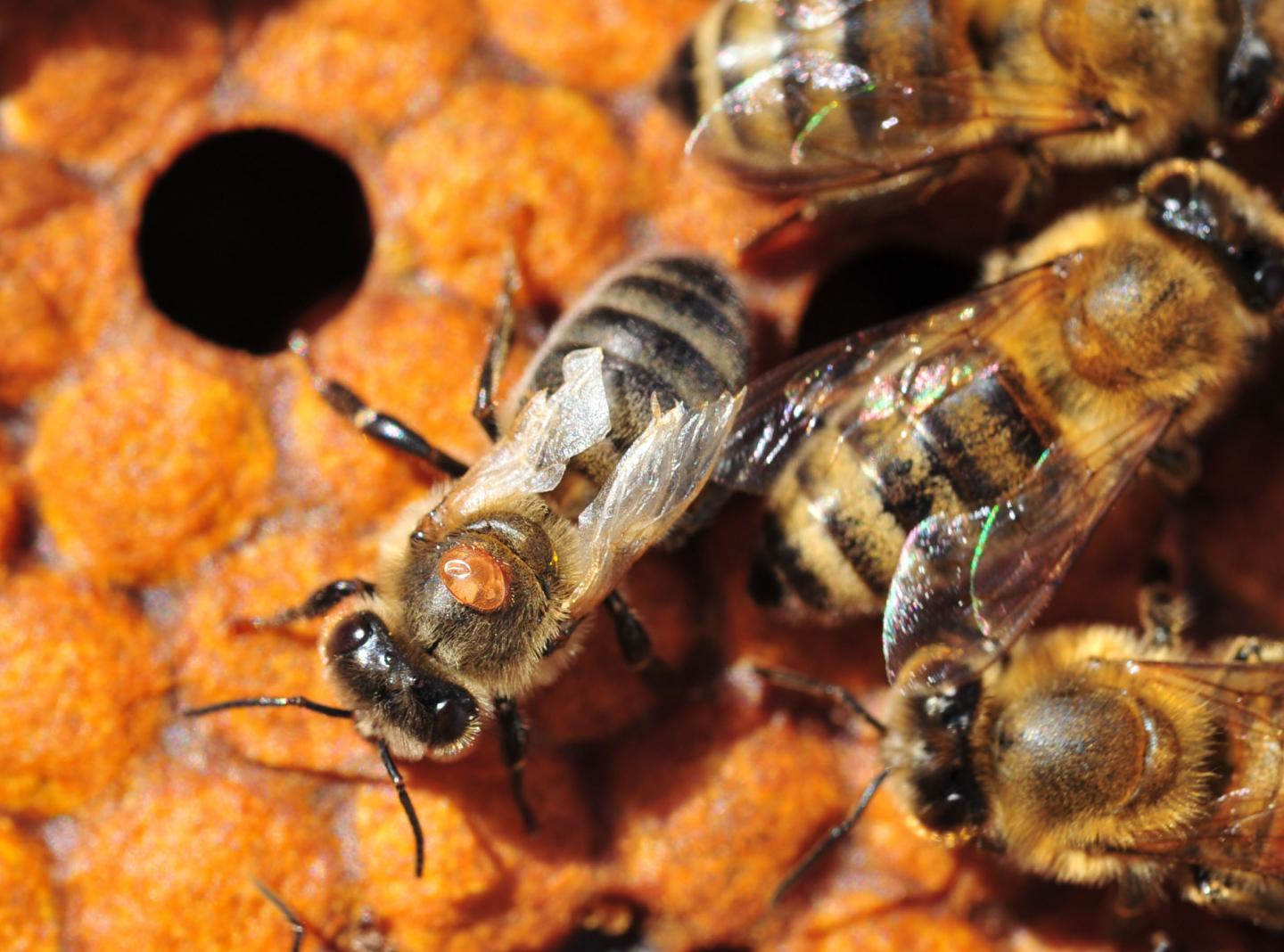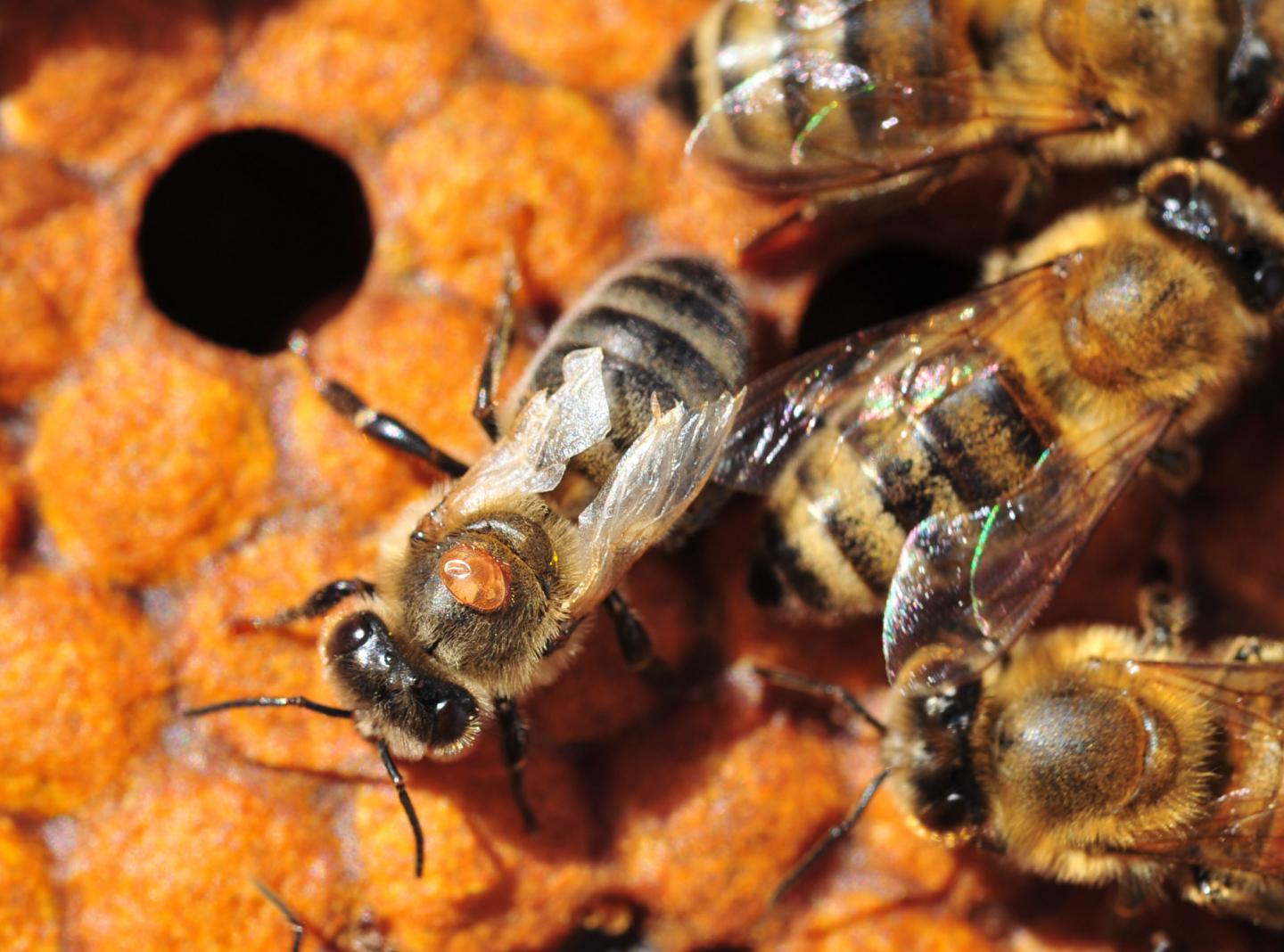
Credit: Photo by Zachary Huang
EAST LANSING, Mich. – Seemingly indestructible Varroa mites have decimated honeybee populations and are a primary cause of colony collapse disorder, or CCD.
Michigan State University scientists have found genetic holes in the pests' armor that could potentially reduce or eliminate the marauding invaders. The team's results, published in the current issue of Insect Science, have identified four genes critical for survival and two that directly affect reproduction.
"The Varroa mite is the worst threat to honeybee health worldwide," said Zachary Huang, MSU entomologist. "They have developed resistance to many pesticides, so it's urgent that we explore and target these genes to develop better control methods."
The mite sucks the blood of honeybees and transmits deadly viruses. Its lifecycle consists of two phases: one where they feed on adult bees, called the phoretic phase, and a reproductive phase that takes place within a sealed honeycomb cell, where the mites lay eggs on a developing bee larva.
Having the double-whammy of eating bees and spreading disease makes Varroa mites the number-one suspect of honeybee population declines worldwide.
Controlling pests like Varroa mites succeeds by either eliminating them or reducing their ability to reproduce. The team used RNA interference to identify the key genes, which could achieve these outcomes. They injected the mites with double-stranded RNA, or dsRNA.
Interfering reduces transcription of a specific gene, the first step of making a gene, a piece of DNA, into a protein. This process, also known as "gene knockdown," has been successful in reducing the mating success and the number of eggs produced by cattle ticks, which threaten cows and other livestock around the world.
Using this approach, the team identified two genes that caused high mortality in Varroa mites – Da and Pros26S. In fact, Da killed more than 96 percent of mites. They also identified four genes – RpL8, RpL11, RpP0 and RpS13 – that control reproduction.
Earlier research has shown that a combination of dsRNAs can be fed to bees at the colony level. Varroa mites absorb the "genetic cocktail" via bee blood and their population was reduced. Future research will explore whether a single-gene approach can be scaled up and achieve the same effect at a colony-wide setting. Using a single gene with a known mechanism will be more cost effective and safe to the honeybees.
The results may have applications beyond honeybees, too.
"It's worth noting that Da reduced reproduction in species of mosquitoes and Drosophila," Huang said. "Future research could help not only protect honeybees, but also reduce disease-carrying mosquitoes or crop-damaging pests."
###
Additional MSU researchers contributing to this study include Guowu Bian and Zhiyong Xi. Xianbing Xie, with Nanchang University (China), also was part of this paper.
This study was supported by the Almond Board of California, the Foundation for the Preservation of Honey Bees, the National Honey Board, MSU's Project GREEEN, Michigan Beekeepers Association, National Natural Science Foundation of China, General Project of Jiangxi Provincial Department of Education and a fellowship from the China Scholarship Council.
Michigan State University has been working to advance the common good in uncommon ways for more than 150 years. One of the top research universities in the world, MSU focuses its vast resources on creating solutions to some of the world's most pressing challenges, while providing life-changing opportunities to a diverse and inclusive academic community through more than 200 programs of study in 17 degree-granting colleges.
For MSU news on the Web, go to MSUToday. Follow MSU News on Twitter at twitter.com/MSUnews.
Media Contact
Layne Cameron
[email protected]
517-353-8819
@MSUnews
http://msutoday.msu.edu/journalists/
Original Source
http://go.msu.edu/Wxz





